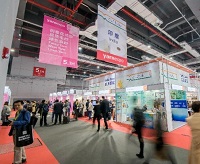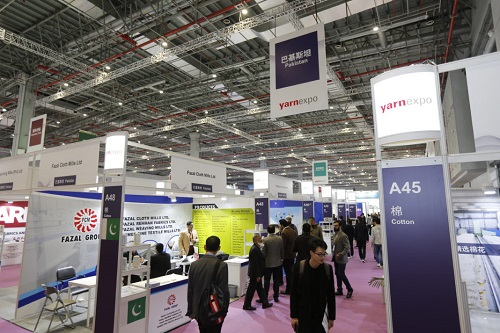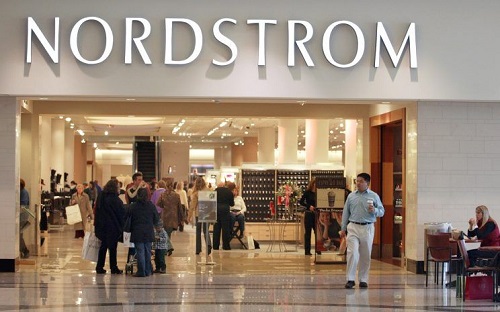FW
Uster Technologies has appointed Oswald Baldischwieler as the new head of the textile technology department and member of the Executive Committee in April. Baldischwieler is an experienced textile technologist and manager. His entire career has been dedicated to the development and promotion of the textile industry, in a number of senior roles.
After working as Mill Manager for the German textile producer Lauffenmühle and as Technical Director and Chief Operating Officer at spinning mill Hermann Bühler, Baldischwieler joined Uster Technologies in 2017. As product manager for in-line process control, he has been responsible for a large part of the Uster portfolio.
Uster Technologies offers a wide range of textile services and support to its customers and partners. These include the Uster® Statistics global benchmarks, laboratory testing services, and textile training and consulting programs. A worldwide team of more than 50 textile technologists, together with more than 200 service engineers, is taking care of 4,500 customers in 75 countries – working at customer sites or in Uster laboratories – conducting training, carrying out tests and providing application know-how.
Central America's second-hand or used clothing industry is experiencing a boost due to the growing demand for affordable clothing among the majority of the population with limited resources and the global trend towards recycling and reusing garments.
“Central America has become a market for second-hand textiles from countries such as the United States, Canada, the European Union, China, and South Korea”, according to a report titled "Reuse before throwing away" by the U.S. consulting firm Garson & Shaw.
The report presented in Costa Rica revealed that over four million tons of used clothing is traded annually, with the used clothing industry in Guatemala, El Salvador, Honduras, and Nicaragua growing by $274 million between 2011 and 2021.
The report estimates that the used clothing sector will provide over three million jobs in the four Central American countries by the early 2040s and generate nearly $200 million in profits through taxes. Nicaragua experienced the fastest and most significant growth in this industry, with 80% of its population purchasing used clothing or footwear. In 2021, Nicaragua imported 52,500 tons of used clothing, ranking 19th among the world's largest importers. The benefit through taxes for the state was $23.7 million in that year alone, and the industry is expected to account for 1% of the national GDP.
Guatemala is another country with a high need for affordable clothing, and demand for used textiles remains strong. In 2021, the country imported 130,000 tons of used clothing, ranking as the ninth-largest importer of these products in the world. The benefit through taxes for the state amounted to $40.2 million in that year, and imports have grown by 10% since 2017.
Honduras imported 66,000 tons of second-hand clothing in 2021, ranking 17th among the world's largest importers. The tax benefits delivered to the state by the used clothing industry amounted to $34.1 million in that year, representing 1.6% of Honduras' GDP.
El Salvador imported 35,000 tons of used clothing in 2021, ranking 23rd in terms of imports worldwide. The second-hand textile industry accounts for 1.4% of the national GDP, and the government collected $16 million in taxes through this industry.
The used clothing industry in Central America is proving to be a vital contributor to the economy, providing affordable clothing to the majority of the population with limited resources, creating jobs, and generating significant tax revenues for the governments of these countries.
 Even before COVID-19 pandemic, most Western brands and retailers were struggling to survive. In the new millennium, brands and retailers increased their reach to new geographies by opening more and more stores, as sales were shrinking or stagnating in the Western world but that doesn’t seem to have worked well.
Even before COVID-19 pandemic, most Western brands and retailers were struggling to survive. In the new millennium, brands and retailers increased their reach to new geographies by opening more and more stores, as sales were shrinking or stagnating in the Western world but that doesn’t seem to have worked well.
Mounting troubles and then a pandemic…
For a couple of years, they were increasingly facing a retail apocalypse, weakening consumer confidence, reducing sales through stores, consistently losing customers to fast fashion and value retailers. Add to that the growth of online retailers; increasing operative expenses like rentals, borrowings and coupled with thin or no profits, and then came the blow from a pandemic. COVID-19 is seems to be the last nail in the coffin for many big brands and retailers.
COVID-19, has swept the globe, forcing people apart and out of public sphere. By and large, only stores selling essential goods remain open, the current environment is no place for department stores. With physical locations contributing zero sales and e-commerce also feeble to make up for it, brands and retailers are taking desperate measures, pulling financial levers like draw-downs of their credit revolvers, hitting the brakes on growth plans, furloughing their workforce even potentially skipping on rent. However, it’s still not clear how much any of this will help ultimately. 
The main problem of the retail sector was that there wasn't much of a place for department stores even before COVID-19. As devastating as it has been to retail as a whole and this segment specifically, the outbreak is only partly to be blamed for department stores' current woes or the predicament that awaits them once it subsides, analysts say.
The problem was that most store chains were running at too many locations, without regard for local culture or basic merchandising practices that makes any store a pleasant place to be, feels Thomai Serdari, a professor of luxury marketing and branding at New York University's Stern School of Business. "They brought it to themselves,” she told Retail Dive in an interview. “They can't blame either the economy or the virus for it."
The unlikely scenario of going back to business as usual
Trade experts now feel, only a few retailers will come out of this unprecedented moment unscathed but department stores are at a point of no return. None can go back to business as usual. Some may not come back at all.
Some players potentially face a decline of 30 to 50 per cent or even more, for many months if not a year or more, and some will be good, believes retail analyst Nick Egelanian, President of retail real estate firm SiteWorks. That makes their current cash crunch, in some ways, the least of their problems, and trimming their fleet a top concern. "Look for all department stores to use this virus as a catalyst to close, right size and/or reposition (with retention agreements with landlords becoming even more prevalent)," he told Retail Dive.
"This is the time to look internally, for these companies to really take a look at who they are, what they stand for — and does it have any correlation to what we’re going to care about after this.” Sanford Stein, Retail Consultant and Author of Retail Schmetail sums up.
 Originally scheduled to take place in March, Intertextile Shanghai Apparel Fabrics – Spring Edition, Yarn Expo Spring and Intertextile Shanghai Home Textiles – Spring Edition have been postponed over concerns surrounding the COVID-19 outbreak.
Originally scheduled to take place in March, Intertextile Shanghai Apparel Fabrics – Spring Edition, Yarn Expo Spring and Intertextile Shanghai Home Textiles – Spring Edition have been postponed over concerns surrounding the COVID-19 outbreak.
Intertextile Shanghai Apparel Fabrics and Yarn Expo will now merge with Intertextile Shenzhen Apparel Fabrics and the debut Yarn Expo Shenzhen, which will be held from July 15 – 17, 2020, with exhibitors of the Shanghai fairs given the option to participate in the Shenzhen editions instead.
Exhibitors of Intertextile Shanghai Home Textiles – Spring Edition have the option to partake in the Autumn Edition instead, which will be held from August 24 – 26, 2020.
The fairs will take place in the brand-new Shenzhen World Exhibition and Convention Center.
Intertextile Shenzhen Apparel Fabrics will take place from 15 – 17 July with an estimated 2,000+ exhibitors expected to join a space of 60,000 sqm. In addition to being held with the first Shenzhen edition of Yarn Expo, CHIC and PH Value will also take place concurrently.
addition to being held with the first Shenzhen edition of Yarn Expo, CHIC and PH Value will also take place concurrently.
The Autumn Editions will take place from September 23 – 25, 2020 at the National Exhibition and Convention Center in Shanghai. In 2019, the Autumn Edition of Intertextile Shanghai Apparel Fabrics saw 4,422 exhibitors from 33 countries and regions, along with 89,662 trade buyers from 120 countries and regions. Yarn Expo Autumn 2019 welcomed 543 exhibitors from 14 countries and regions, and 19,155 trade buyers from 93 countries and regions. The fairs will be held concurrently with CHIC and PH Value. Intertextile Shanghai Home Textiles – Autumn Edition
The 2019 edition featured 1,147 exhibitors from 27 countries and regions, and 35,390 trade buyers from 117 countries and regions. The Autumn Edition of this fair is due to take place from 24 – 26 August. Intertextile Shenzhen Apparel Fabrics and Intertextile Shanghai Apparel Fabrics are co-organised by Messe Frankfurt (HK) Ltd; the Sub-Council of Textile Industry, CCPIT; and the China Textile Information Centre.
The co-organisers of Yarn Expo Shenzhen and Yarn Expo Autumn are Messe Frankfurt (HK)and the Sub-Council of Textile Industry, CCPIT. Intertextile Shanghai Home Textiles is co-organised by Messe Frankfurt (HK); the Sub-Council of Textile Industry, CCPIT; and the China Home Textile Association (CHTA)
 With customers dwindling and stocks rising, the retail sector was already facing a crisis. Covid-19 has only added to their woes. The pandemic has forced people out of public sphere as only stores selling essential goods remain open, department stores are worst hit.
With customers dwindling and stocks rising, the retail sector was already facing a crisis. Covid-19 has only added to their woes. The pandemic has forced people out of public sphere as only stores selling essential goods remain open, department stores are worst hit.
Major retailers like Nordstrom, Macy's, J.C. Penney and Kohl are taking desperate measures to deal with the crisis. Besides halting their growth plans they have also furloughed most workforces and potentially skipping rent. Neiman Marcus and Southern department store Belk have also furloughed some workers and introduced temporary cut salaries.
Credit Suisse analysts say, department stores are the worst hit in this scenario. Not only do these stores face high debits but also their discretionary costs too remain low. Their relatively low rents in many areas also work against them as at only about 1.5 per cent sales, any relief won't make much dent.
However, Thomas Serdari, Professor at New York University’s Stern School of Business believes the main problem these stores face is their dwindling popularity even before the Convid-19 outbreak. The outbreak is only partly to blame for their' current woes as most of them have been running too many locations, without regard for local culture or the basic merchandising practices,
popularity even before the Convid-19 outbreak. The outbreak is only partly to blame for their' current woes as most of them have been running too many locations, without regard for local culture or the basic merchandising practices,
Thus, these stores are unlikely to come out of this unprecedented moment unscathed. They may never be able to go back to business again. Some of these players also face profit declines of 30 to 50 per cent or even more. That makes trimming their fleets a top priority.
Retailer shut stores as demand dwindles
JC Penny’s flagship store in New York’s Fifth Avenue too is likely to face a decline in profits. As retail consultant Sanford Stein, Author of Retail Schmetail told Retail Dive in an interview, the retailer is unlikely to resume business even after 18 months from now. Similarly, Nick Egelmian, President of SiteWorks predicts at least a major debt restructuring.
According to Egelanian, Kohl's is likely to be acquired, possibly by Amazon. However, Nordstrom would be a survivor; though it would have to close stores. The store is also likely to be privatized though it would have to do some recalibrating. Macy’s , which expanded exponentially early this century by gobbling up local and regional department store chains nationwide, is destined to either shed as many as 500 stores or shut up locations where the demand for its products is dwindling.
Customer service to gain prominence
However, this could also be a blessing in disguise for retailer as it would enable them to finally understand problems in their business model. According to Sanford Stein, Retail Consultant and Author of Retail Schmetail, go-to customer bait, promotions, may lose some of their draw, despite the financial pressures looming for many consumers. He advises companies to relook internally at their operations, value and future aspirations. The retailer believes henceforth the whole aspect of what a retailer will become far more important than it ever was before. Providing value will gain much more importance than price as customers will emphasise on a positive shopping experience above everything else.
Inditex SA’s main import and export airport hub in Spain is ramping-up as business in Asia picks up, following restrictions due to COVID-19 earlier in the year. The pick-up in traffic in Zara offers a window into the notably tight-lipped company’s operations, notably in the Eastern Asian market. The retailer uses the airport as a base to import textile products and export apparel. Under Inditex’s unique distribution model, the vast majority of its apparel manufactured outside Spain has to be sent to the country and then exported to stores around the world.
The company has been able to continue certain operations in Spain in spite of a government order to place non-essential economic activity on standstill. With the slowdown in Spain and other countries, Inditex has re-assigned the majority of its space in the airport as a base of imports of medical goods.
The Zaragoza airport is one of Spain’s three largest cargo airports, and had the second highest cargo traffic in February, before the Coronavirus crisis hit the country in full.
Munich Fabric Start (MFS), the international fabric trade fair, is organizing the next two fairs as usual and are working at full capacity to ensure that View Premium Selection in July 2020 and Munich Fabric Start in September 2020 can take place on the planned dates.
MFS is currently examining various scenarios with which it can react flexibly and in a solution-oriented manner to any changes in government guidelines for events. The organizer is taking a proactive approach to the opportunities which may open up here in the future. At the same time, it is convinced that a digital solution can never completely replace its core business, textile products. Therefore, its Plan B is not necessarily completely digital – in view of the fact that a digital format involves many different parameters and functions that have to interlock perfectly.
MFS is in close contact with other trade fair organisers and relies on the findings of experts and political decisions, without own interpretations or statements on the current social and political issues.
Levi Strauss plans to use the pandemic as an opportunity to come out stronger on the other side. It plans to furlough its retail store staff in the US. As its bricks-and-mortar stores across Europe and North America, in addition to other parts of the world, remain closed, Levi Strauss expects to take a materially significant hit during the second quarter of 2020.
The company recently reported its first-quarter 2020 results, for the period ended Feb. 23. However, COVID-19 outbreak that started in China roughly during the middle of the quarter hit the period’s net revenue in Asia by about $20 million.
The company reported net income of $153 million, or 37 cents per share, compared with $147 million, or 37 cents a share, a year earlier. Its adjusted quarterly earnings were 40 cents per share, 5 cents better than analysts were expecting, based on Refinitiv data. Revenue rose to $1.51 billion from $1.44 billion a year ago, better than the $1.47 billion analysts were anticipating.
The brand has reopened all its stores in Mainland China after the lockdown to stop the spread of Coronavirus, including its biggest China location in Wuhan, where the virus emerged. Traffic there is still below year-ago levels, but is progressing week by week, according to Bergh. E-commerce remains strong, he said.
In the face of the Covid-19 crisis, the International Apparel Federation (IAF) has urged the apparel supply chain and its stakeholders to enact sufficient supply chain solidarity. According to the federation, as stores close around the globe and orders stop, brands should collaboratively search for ways to reduce the damage to suppliers. Operating with the objective of moving as much of the pain upstream in the supply chain will create breaches of trust that will be difficult to repair when we emerge from this crisis, IAF stated.
In addition to calling on the industry to enact supply chain solidarity, the IAF is also urgently asking the appropriate multilateral organisations and the financial support of national governments to step in to quickly make an industry-wide support plan for the most vulnerable parts of the global apparel and textile industries.
The Covid-19 pandemic has completely halted production in Tirupur with payments delayed for the shipments sent before the lockdown. Exporters say some customers are not taking delivery of the shipments because they have shut shop. Ready-made garment players had been hoping for a revival in demand in China but with the virus spreading to Europe, the US and other major markets, there are no orders coming from the major retailers.
India Ratings and Research has revealed that for FY20, profit margins in the city are likely to be impacted by 120-150bp and credit metrics to moderate with pressure on liquidity and higher working capital utilizations
The agency assumes that India’s exports — already reduced by more than 40 per cent till January 2020 owing to the US-China trade war —will be substantially hit till H1FY21. The agency assumes Ebitda will drop at least 15 per cent in FY21 across its textile portfolio.











